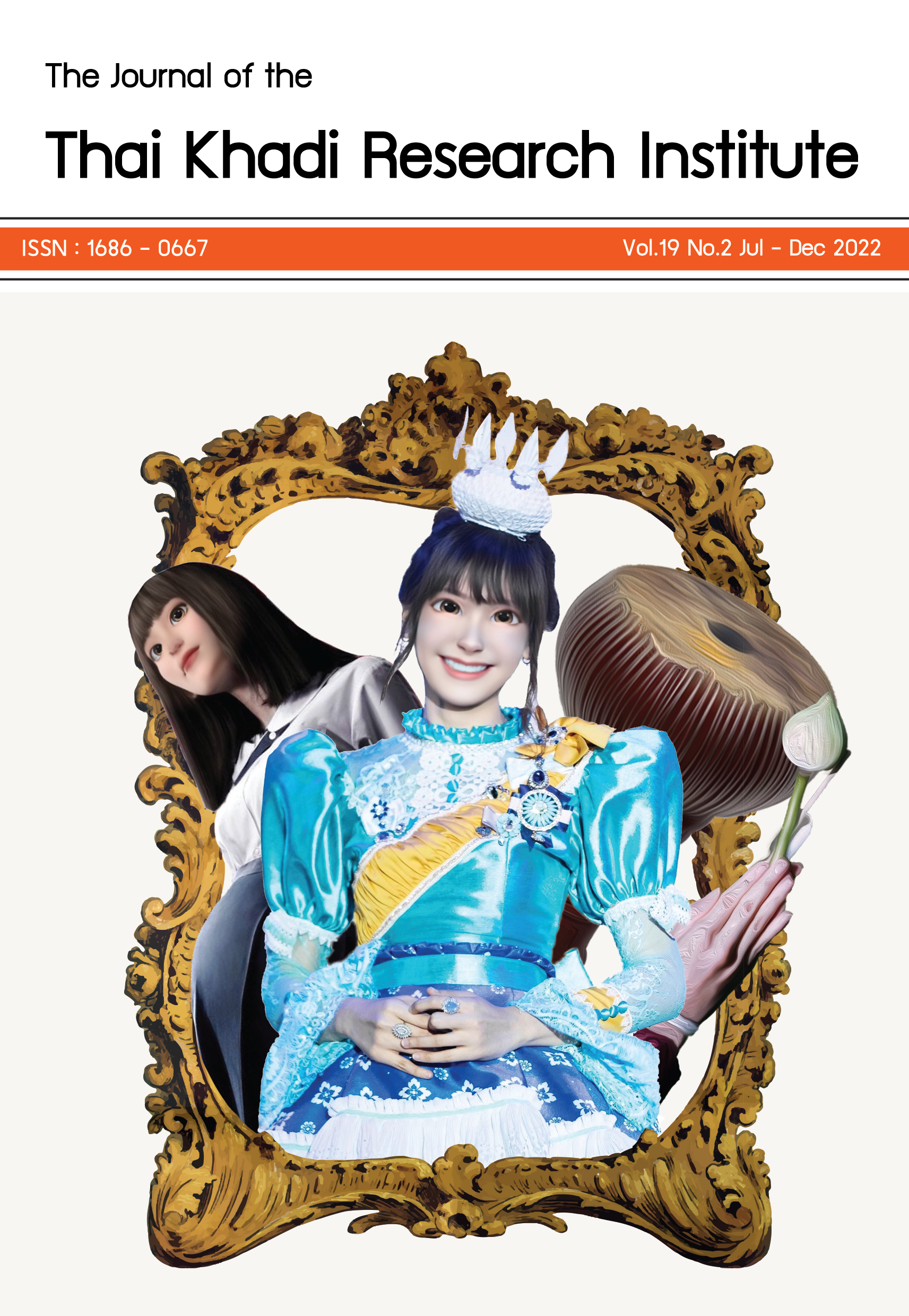The Origin and Development of the Pattern of Acanthus Leaf in Thai Art
Main Article Content
Abstract
This research is aimed to study the patterns of Acanthus leaf in Thai artworks produced during Ayutthaya and Rattanakosin periods in terms of their origin and development as well as the artist’s techniques in applying Acanthus leaves to various forms of Thai artworks. Data was collected from historical documents, photos and archaeological sites; the patterns of Acanthus leaf found were compared to those in Western artworks.
Findings revealed that Acanthus leaf first appeared in Ayutthaya period, particularly in the reign of King Narai the Great when Ayutthaya had close contacts with Western nations. Having a rough appearance, the pattern of Acanthus leaf was widely used to decorate the pediments of Western style buildings. In Rattanakosin era, in the reigns of King Rama III and King Rama IV, the pattern of Acanthus leaf was more similar to Western patterns. In the reign of King Rama V, the pattern was authentic Western art, made by Western artists working for the Royal Court of Siam. The pattern of Acanthus leaf in this period was used to ornament several forms of artworks, particularly the pediment and capital decoration.
In using the pattern of Acanthus leaf for decorative purposes, both Ayutthaya and Rattanakosin master artisans used similar techniques. They adapted Acanthus leaf patterns to traditional Thai patterns or cut off some details to make them in an appropriate shape before combining with traditional Thai patterns such as Floral motifs or Kankhot (Vine Pattern).
Downloads
Article Details

This work is licensed under a Creative Commons Attribution-NonCommercial-NoDerivatives 4.0 International License.
There is no charge for paper processing and publication. Once the paper is under peer-review process, however, if the paper is withdrawn for any reason the author will be responsible for the expense of 3,000 Baht occurred in the review process.
References
Chuarun, A. (1993). ประวัติและแบบอย่างศิลปะยุคโบราณและยุคกลาง [History of Ancient and Medieval Art]. Bangkok: Odeon Store.
Chungsiriarak, S. (2010). สถาปัตยกรรมแบบตะวันตกในสยาม สมัยรัชกาลที่ 4 - พ.ศ. 2480 [Western architecture in Siam during the ring of King Rama IV - 1937 A.D.]. Bangkok: Amarin Printing.
Honguten, H. (2006). ศิลปะคลาสสิก [Classic Art]. Bangkok: Amarin Printing.
Leesuwan, V. (2016). พจนานุกรมศัพท์ศิลปกรรมไทย [Thai Art Vocabulary Dictionary]. Nonthaburi: Muang Boran.
Leksukhum, S. (2000). Temples of gold Seven Centuries of Thai Buddhist Paintings. Thailand: River Book.
Leksukhum, S. (2009). ประวัติศาสตร์ศิลปะไทย (ฉบับย่อ): การเริ่มต้นและการสืบเนื่องงานช่างในศาสนา [beginning and evolution in religious art]. Bangkok: Muang Boran.
Leksukhum, S. (2010). งานช่าง คำช่างโบราณ [Thai craft Dictionary]. Bangkok: Fine Arts Department.
Leksukhum, S. (2010). พัฒนาการของลายไทย: กระหนกกับเอกลักษณ์ไทย [Evolution of That art pattern: kranok and thai identity]. Bangkok: Muang Boran.
Ministry of Foreign Affairs (2018). ประวัติศาสตร์การฑูตไทย [Thai diplomatic history]. Bangkok: Devavongsevaropakarn Institute.
Nor na paknam. (2007). วิวัฒนาการลวดลายไทย [Evolution of thai art pattern]. Bangkok: Muang Boran.
Nor na paknam. (2000). ศิลปะลายรดน้ำ [Golden Laque]. Bangkok: Muang Boran.
Pinsri, K. (1997). การวิเคราะห์อิทธิพลศิลปะและวัฒนธรรมตะวันตกที่ปรากฏในจิตรกรรมฝาผนังในรัชสมัยของพระบาทสมเด็จพระจอมเกล้าเจ้าอยู่หัว: กรณีศึกษาเฉพาะจิตรกรรมฝาผนังภายในพระอุโบสถวัดโพธินิมิตรสถิตมหาสีมาราม [Analysis the western art and culture depicted in the mural painting in the reign of King Mongkut: the mural painting of Ubosot wat poh ni mitre sat hit maha sima ram]. (Thesis of the Graduated school. Silpakorn University).
Poemsaengsuwan, J. (2004). พระอุโบสถและพระวิหารที่ได้รับอิทธิพลตะวันตกสมัยอยุธยาตอนปลาย (พ.ศ. 2199 - 2310) [The Western influence on Ubosathas and Viharas in late Ayudhya Period (1656 - 1767 A.D.)], NAJUA: Architecture, Design and Built Environment Journal, 1(1), 81 - 103.
Royal Institute (1998). พจนานุกรมศัพท์ศิลปะ อังกฤษ - ไทย [Dictionnary in Art: English - thai]. Bangkok: The royal Institute.
Saisingha, S. (2008). งานช่างสมัยพระนั่งเกล้าฯ [Artisans in the reign of Rama III]. Bangkok: Matichon press.
Sukpanich, K. (1969). อยุธยาคดี [About Ayutthaya]. Bangkok: Kurusapha.
Suksri, N,M.R. (1994). มรดกสถาปัตยกรรม กรุงรัตนโกสินทร์ [Architectural Heritage of Rattanakosin]. Bangkok: Amarin Printing.


